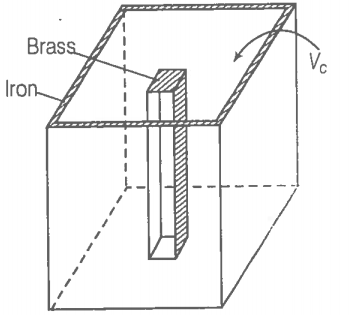Hint: The change in volume of the two materials should remain the same.
In the previous problem, the difference in the length was constant.
In this problem, the difference in volume is constant.
The situation is shown in the diagram.
Step 1: Find the change in volumes.
Let be the volumes of iron and brass vessel at 0°C.
be the volumes of iron and brass vessel at .
be the coefficients of volume expansion of iron and brass.
As per the question,
Step 2: Find the individual volumes.
Since, = constant,
So,
Solving Eqs. (i) and (ii), we get,

